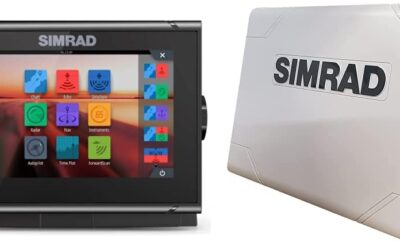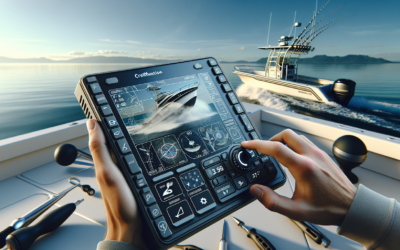You’re no stranger to the essential role that fish finders play in your angling adventures. ‘Battery Life Basics: Choosing and Maintaining Power Sources for Fish Finders’ is prepared to guide you through the intricacies of power sources dedicated to these invaluable tools. But it’s more than just about selecting the right battery; it’s a comprehensive walk-through for understanding, choosing and preserving these power sources to complement your fishing expeditions. Get ready to enhance your knowledge and skills which will undoubtedly reflect in your upcoming aquatic journeys.
Understanding Battery Demands of Fish Finders
Whether you’re a novice angler or a seasoned pro, fish finders offer an efficient way to locate and catch fish. Understanding a fish finder’s power needs is a crucial part of using it effectively and optimally.
How much power do fish finders need?
While the exact power requirements of a fish finder vary from model to model, most fish finders operate on a 12 volt battery. Ranging from less expensive units that take up fewer than 0.5 amps to more complex devices that require between 1 to 2 amps. So, it’s critical to check the specifications of your specific model to understand the power need.
Battery consumption of various fish finder models
The power consumption of fish finders depends on the size, the features, and the frequency of use. For example, larger units with high-definition and colourful screens often consume more energy than small, black and white ones. Similarly, fish finders with advanced features like GPS navigation and chart plotting, use considerably more power.
Effects of using fish finder features on battery life
Different features can influence a fish finder’s battery life significantly. The use of features like backlighting, depth tracking, water temperature monitoring, and GPS can drain battery energy. However, these features are often crucial for successful fishing trips. Therefore, it’s essential to balance the use of these features with battery savings.
Types of Batteries Suitable for Fish Finders
Various types of batteries are compatible with fish finders. The most common ones include Lithium-ion batteries, Alkaline batteries, NiMH batteries, and Lead-acid batteries.
Lithium-ion batteries
Lithium-ion batteries are popular for their high energy density and long lifespan. They are lightweight, compact, and have no memory effect, which means you can recharge them even if they aren’t fully discharged.
Alkaline batteries
Alkaline batteries have a lower cost and are readily available compared to other batteries. However, they usually have a shorter lifespan and are not rechargeable, making them less environmentally friendly.
NiMH batteries
Nickel-Metal Hydride (NiMH) batteries stand out due to their rechargeability and high capacity. While they have a slightly lower voltage than Lithium-ion batteries, their ability to hold a charge over time makes them an excellent option for fish finders.
Lead-acid batteries
Lead-acid batteries, commonly used in cars, have a higher capacity and can supply a steady current over prolonged periods. They are durable and relatively inexpensive but quite heavy, which may affect portability.
Choosing the Proper Battery Type and Size
Selecting the correct battery type and size depends on various factors: the power needs of your fish finder, the desired portability, and weight, and finally, the service life and cost over time of the battery itself.
Based on power requirements of a fish finder
The power requirements of your fish finder will largely guide the type and size of battery you’ll need. Refer to your fish finder’s manual to determine what kind of battery and power requirements it has.
Considering portability and weight
If you are a kayak or canoe angler, you might prefer a lightweight battery to maintain your vessel’s maneuverability. Lithium-ion and NiMH batteries are usually more portable and lighter than lead-acid ones.
Assessing the service life and cost over time
Different batteries have varying lifespans, and this can impact the overall cost of usage. While some batteries may be pricier initially, their longer service life could result in savings over time.
Maximizing Battery Life in Fish Finders
Extending the battery life of your fish finder not only saves money but also contributes to better performance and sustainability.
Reduce brightness and contrast on screen
Just like with any electronic device, you can conserve battery life by lowering the screen brightness. This can be especially helpful during daylight when you don’t need maximum brightness to view the screen.
Turn off unnecessary features
Many fish finders come with numerous features that are great but they might not always be necessary. Turning them off when they’re not in use can effectively conserve battery life.
Choose energy-efficient settings
Many modern fish finders offer energy-saving settings. Using these modes can help you maximize your battery life and enhance your fishing experience.
Battery Life and Fish Finder Performance
Correct and timely maintenance of your fish finder’s battery ensures optimal performance of the device.
Impacts of a low battery on fish finder readings
Low battery levels can influence the precision of your fish finder readings. You may notice intermittent signal loss, unstable depth readings, and even incorrect information about fish and structures.
Signs that it’s time to replace the battery
Signs that your battery needs replacement include a decrease in runtime, an inability to hold a full charge, or physical issues like swelling or leakage. Renewing your battery ensures the fish finder operates at its best.
The relationship between battery life and depth finding accuracy
A well-maintained battery ensures consistent power supply, ensuring accurate depth finding and other readings. Inconsistent battery supply can lead to distorted or inaccurate results.
Proper Battery Installation and Removal
Knowing how to correctly install and remove your fish finder’s battery is essential not only for the device’s efficacy but also for your safety.
Safety measures during battery replacement
Always ensure your fish finder is switched off before replacing the battery. For rechargeable batteries, make sure they are cooled before removal or installation. Remember, the positive and negative terminals must be correctly connected to avoid damage or overheating.
Ensuring firm contacts and correct placement
When installing the battery, make sure the connections are firm and not loose. Incorrect placement can lead to inefficiency and may cause damage to the fish finder.
Storage of removed batteries
Store removed batteries in a cool, dry place. Storing batteries in a hot or damp place can damage them and shorten their lifespan.
Maintaining and Extending Battery Life
Routine maintenance and correct usage will extend your fish finder battery’s life.
Regularly scheduled recharging
Frequent and regular recharging extends the battery’s lifespan. Avoid letting your battery–especially Lithium-ion– from draining completely before charging it.
Avoiding full discharge
Full discharge can damage the battery over time, reducing its capacity and lifespan. Always recharge your battery before it fully depletes.
Optimal battery storage conditions
Store spare batteries in a cool, dry place. Extreme temperatures and moisture can degrade the battery and reduce its effectiveness.
Choosing Suitable Chargers for Fish Finder Batteries
Not all chargers are created the same. Picking the right charger can affect the lifespan and performance of your battery.
Standard vs. quick-charge chargers
While quick-charge chargers might seem convenient, they can sometimes reduce battery life due to overheating. A standard charger might take longer, but it usually prolongs battery life.
Solar-powered and portable options
Solar-powered chargers are a great eco-friendly alternative. They also offer convenience, especially during long fishing trips. Consider portable options for ease of movement and flexible usage.
Assessing charger quality and safety features
Invest in a charger with quality and safety qualifications. Look for ones with overcharge, over-voltage, short-circuit, and other protection mechanisms.
Risks and Common Battery Problems
Understanding the potential risks and common battery problems can help you maintain your battery better and ensure a smooth fishing experience.
Leakage and corrosion
Battery leakage can lead to corrosive damage to your battery and fish finder. Regular inspection can help you catch any signs of leakage early.
Swelling and bloating of lithium-ion batteries
Overcharging, overheating, or physical damage can cause lithium-ion batteries to swell. This can reduce battery life and may even pose a safety risk.
Shorter lifespan and decreased efficiency over time
Batteries degrade over time, leading to a shorter lifespan and decreased efficiency. However, with the right maintenance, you can slow down this degradation.
Troubleshooting Common Battery Issues
Knowing how to troubleshoot common battery problems can save you time and money, and help you avoid frustrating interruptions during your fishing trips.
How to clean corroded contacts
If your battery contacts become corroded, clean them with a mixture of baking soda and water, using a toothbrush or a cotton swab. This will ensure better connectivity and performance.
Safely disposing failed batteries
Dispose of failed batteries properly according to your local regulations to protect the environment. Many retailers offer battery recycling programs.
When to seek professional help
DIY fixes can solve many basic battery problems. However, if the issue is complex or involves physical damage to the battery or fish finder, it’s better to seek professional help. Battery issues can sometimes signify deeper problems with the fish finder.
Understanding battery life basics is key to getting the most out of your fish finder. By choosing the right batteries and maintaining them properly, you’ll enjoy reliable performance and extend the life of your device. Happy fishing!









